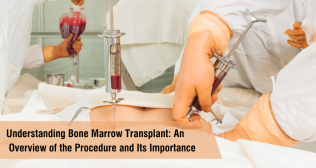
Myelodysplastic Syndrome (MDS): Causes, Types, Diagnosis, and Treatment
Our bodies rely on a constant, fresh supply of blood cells, produced tirelessly within our bone marrow. This internal factory is responsible for creating red blood cells to carry oxygen, white blood cells to fight infection, and platelets to stop bleeding. But what happens when this production line malfunctions? This is the reality for individuals with a group of complex blood disorders known as Myelodysplastic Syndrome (MDS).
Often misunderstood, MDS is a serious condition that affects the very foundation of our health. For patients and families navigating this diagnosis, clear information is essential. This guide will provide a comprehensive overview of MDS, from its causes and symptoms to the latest advancements in diagnosis and treatment.
What Is MDS?
To begin, what is MDS? Myelodysplastic syndromes are a group of cancers where the bone marrow fails to produce enough healthy, mature blood cells. Instead, the immature blood cells (called blasts) are abnormal (dysplastic) and may not develop properly. These defective cells often die in the bone marrow or soon after entering the bloodstream. As a result, the body has a shortage of one or more types of blood cells, a condition known as cytopenia.
This can lead to a wide range of health problems, from severe fatigue to life-threatening infections. Over time, in about one-third of patients, Myelodysplastic Syndrome can progress to a more aggressive form of cancer called acute myeloid leukemia (AML).
Causes and Risk Factors
In the majority of cases, the exact cause of Myelodysplastic Syndrome is unknown. This is referred to as "de novo" or primary MDS. However, certain factors are known to increase a person's risk of developing the condition.
- Age: MDS is most common in older adults, with the average age of diagnosis being over 65.
- Previous Cancer Treatment: Exposure to certain chemotherapy drugs or radiation therapy for a prior cancer can damage the bone marrow's stem cells, leading to "secondary" or treatment-related MDS.
- Environmental and Chemical Exposure: Long-term exposure to certain industrial chemicals, such as benzene (found in gasoline and used in the rubber industry), and some pesticides has been linked to an increased risk.
- Genetic Predisposition: While rare, some inherited genetic disorders can increase the likelihood of developing MDS.
Recognizing the Signs: MDS Symptoms
The signs of this condition are often subtle at first and can be mistaken for normal signs of aging. The specific MDS symptoms a person experiences depend on which type of blood cell is most affected.
- Due to Low Red Blood Cells (Anemia): This is the most common issue in MDS. Symptoms include persistent fatigue and weakness, shortness of breath (especially with activity), pale skin, and dizziness.
- Due to Low White Blood Cells (Neutropenia): A shortage of infection-fighting white blood cells can lead to frequent or recurring infections, fevers, and illnesses that are difficult to recover from.
- Due to Low Platelets (Thrombocytopenia): When platelet counts are low, the blood cannot clot properly. This can cause easy bruising, tiny red spots under the skin (petechiae), frequent nosebleeds, and bleeding from the gums.
Because these MDS symptoms can overlap with many other conditions, a thorough medical evaluation is essential for an accurate diagnosis.
Understanding the Types of MDS
It is important to know that MDS is not a single disease. There are several different types of MDS, which are classified by the World Health Organization (WHO). This classification is based on several factors, including the appearance of the blood and bone marrow cells, the percentage of immature blast cells, and the presence of specific genetic mutations.
Knowing the specific subtype helps doctors predict the course of the disease and determine the most appropriate treatment plan.
Diagnosis and Staging
Diagnosing MDS requires a series of tests to evaluate the blood and bone marrow.
- Blood Tests: A Complete Blood Count (CBC) is the first step, used to measure the levels of red cells, white cells, and platelets and to check their size and shape.
- Bone Marrow Aspiration and Biopsy: This is the definitive test for MDS. A doctor removes a small sample of liquid bone marrow (aspiration) and a tiny piece of bone filled with marrow (biopsy), usually from the back of the hip bone. These samples are examined under a microscope to check for abnormal cells and the percentage of blasts.
- Cytogenetic Analysis: The bone marrow sample is also tested for any changes or abnormalities in the chromosomes of the cells, which can help in classifying the MDS and predicting its severity.
Myelodysplastic Syndrome Treatment Options
The approach to myelodysplastic syndrome treatment is highly personalized. The goals are to manage symptoms, improve quality of life, reduce the need for transfusions, and slow the progression of the disease to AML.
- Supportive Care: This is the foundation of MDS management and aims to treat the symptoms caused by low blood counts. It includes blood transfusions to address anemia, platelet transfusions to control bleeding, and antibiotics to treat infections. Growth factors, which are drugs that stimulate the bone marrow to produce more blood cells, may also be used.
- Low-Intensity Therapies: For patients who are not candidates for aggressive treatment, these therapies can be very effective. They include hypomethylating agents (azacitidine, decitabine), which are drugs that can help improve bone marrow function and kill abnormal cells.
- High-Intensity Therapies: This involves intensive chemotherapy, similar to that used for acute leukemia. It is typically reserved for younger, healthier patients with more aggressive forms of MDS.
- Stem Cell Transplant: An allogeneic stem cell transplant (using stem cells from a donor) is the only potentially curative myelodysplastic syndrome treatment. It is a complex and risky procedure, generally considered for younger patients who have a suitable donor.
Living with Hope
A diagnosis of Myelodysplastic Syndrome can be challenging, but advancements in treatment have significantly improved the outlook for many patients. Working closely with a hematologist and a dedicated healthcare team is key to developing a personalized care plan that manages the disease effectively. With the right support and treatment, many individuals with MDS can lead full and meaningful lives.
Frequently Asked Questions
1. Is MDS a form of cancer?
Yes, Myelodysplastic Syndromes are considered a group of blood cancers because they involve the uncontrolled growth of abnormal cells in the bone marrow.
2. Can MDS be cured?
Currently, the only potential cure for MDS is an allogeneic stem cell transplant. Other treatments focus on managing symptoms and improving quality of life.
3. Is MDS hereditary?
In most cases, MDS is not hereditary. However, having a family history of the disease or certain rare genetic syndromes can slightly increase a person's risk.
4. What is the life expectancy for someone with MDS?
Life expectancy varies greatly depending on the specific type of MDS, the patient's age, overall health, and response to treatment. Many people live for many years with MDS.
5. Does diet affect MDS?
While no specific diet can cure MDS, maintaining a healthy, balanced diet is important for overall health, energy levels, and strengthening the immune system.



















